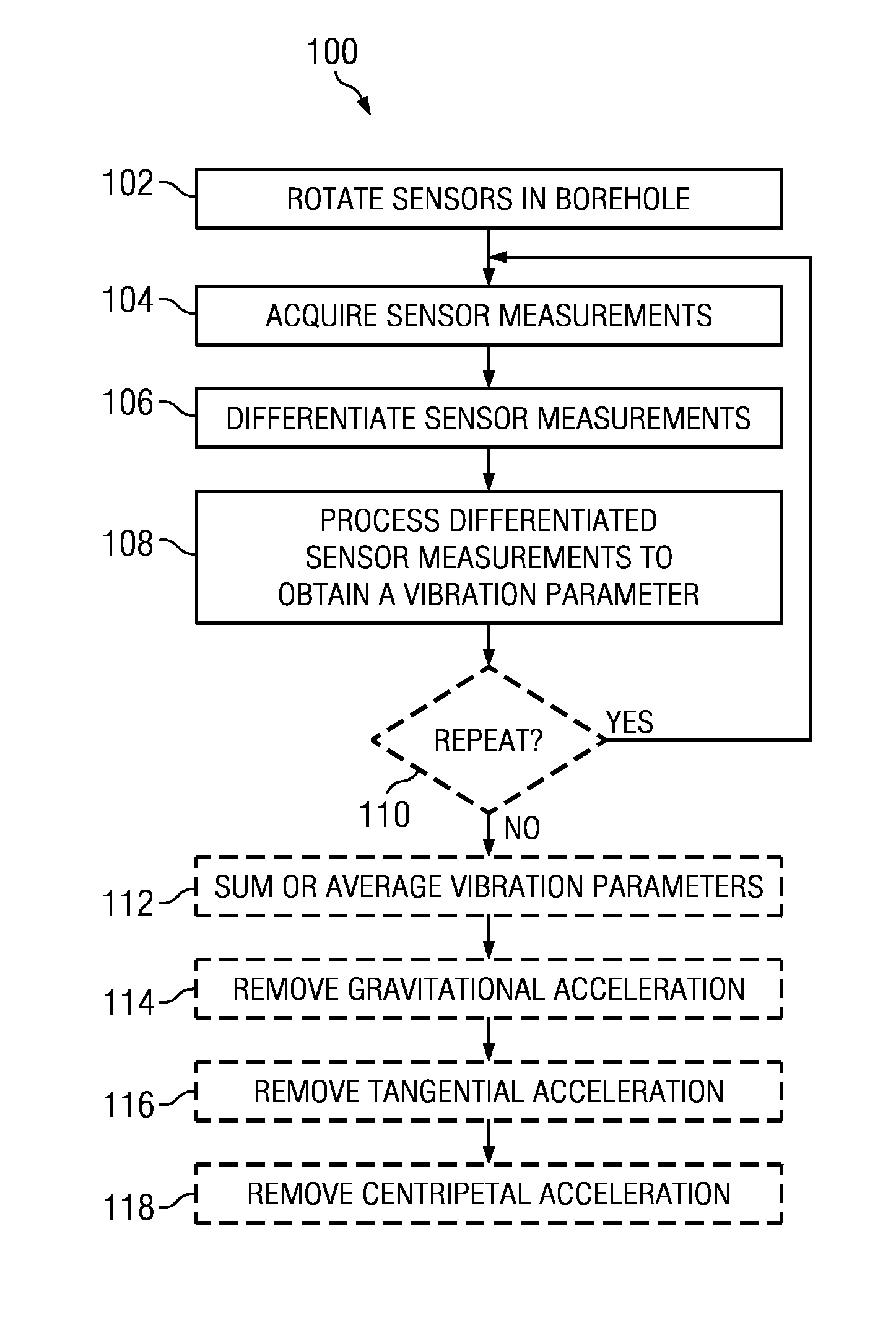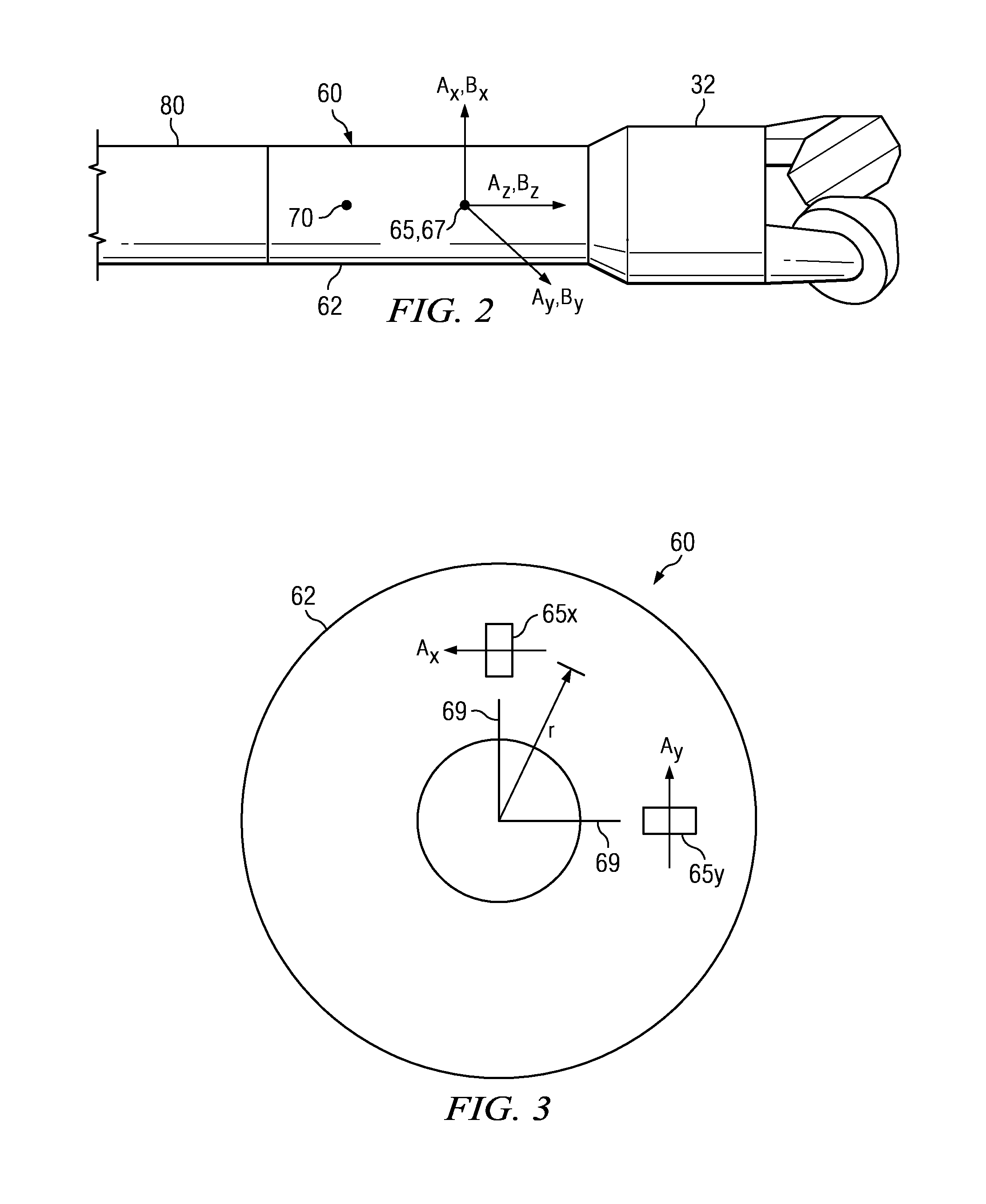Downhole dynamics measurements using rotating navigation sensors
a technology of navigation sensor and downhole, which is applied in the direction of instruments, surveying, and borehole/well accessories, etc., can solve the problems of bha failure, damage to the well, and excessive fatigue damage to the bottom hole assembly, so as to reduce the complexity and overall power consumption of the downhole measurement system
- Summary
- Abstract
- Description
- Claims
- Application Information
AI Technical Summary
Benefits of technology
Problems solved by technology
Method used
Image
Examples
Embodiment Construction
[0019]FIG. 1 depicts drilling rig 10 suitable for using various methods disclosed herein. A semisubmersible drilling platform 12 is positioned over an oil or gas formation (not shown) disposed below the sea floor 16. A subsea conduit 18 extends from deck 20 of platform 12 to a wellhead installation 22. The platform may include a derrick and a hoisting apparatus for raising and lowering a drill string 30, which, as shown, extends into borehole 40 and includes a drill bit 32 and a near-bit sensor sub 60 (such as the iPZIG® tool available from PathFinder®, A Schlumberger Company, Katy, Tex., USA). Drill string 30 may further include a downhole drilling motor, a steering tool such as a rotary steerable tool, a downhole telemetry system, and one or more MWD or LWD tools including various sensors for sensing downhole characteristics of the borehole and the surrounding formation.
[0020]It will be understood by those of ordinary skill in the art that the deployment illustrated on FIG. 1 is m...
PUM
 Login to View More
Login to View More Abstract
Description
Claims
Application Information
 Login to View More
Login to View More - R&D
- Intellectual Property
- Life Sciences
- Materials
- Tech Scout
- Unparalleled Data Quality
- Higher Quality Content
- 60% Fewer Hallucinations
Browse by: Latest US Patents, China's latest patents, Technical Efficacy Thesaurus, Application Domain, Technology Topic, Popular Technical Reports.
© 2025 PatSnap. All rights reserved.Legal|Privacy policy|Modern Slavery Act Transparency Statement|Sitemap|About US| Contact US: help@patsnap.com



